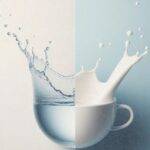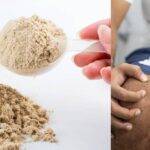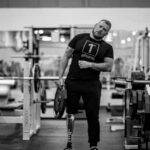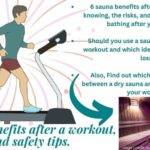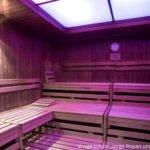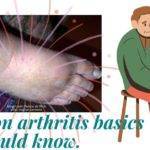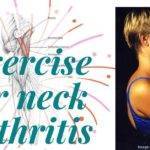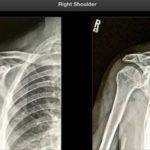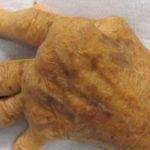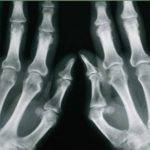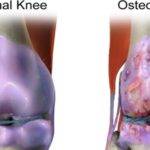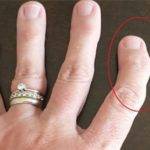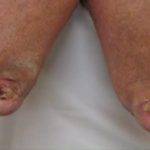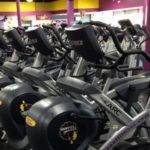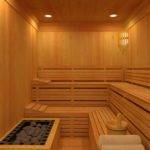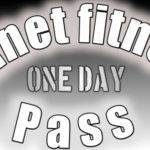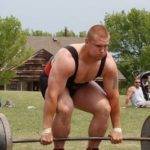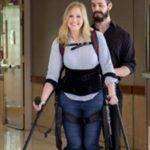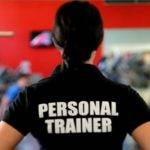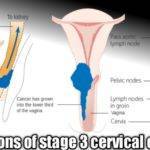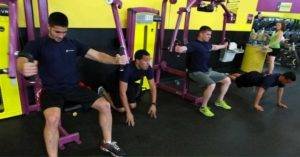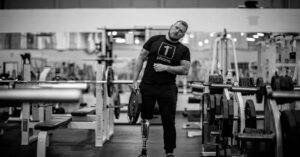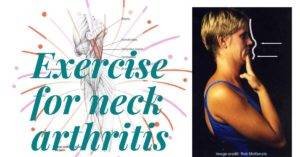
Table of Contents
The CDC has recommended arthritic patients have 150 minutes of moderate-intensity or 75 minutes of vigorous-intensity activity weekly. Healthy individuals could do a lot more but this is not so for those with arthritis. Certain activity types, intensity, and duration could result in arthritic flares.
If you cannot take 150 minutes of activity weekly, it went on to state you should stay as active as permitted by your health according to the Centers for Disease Control and Prevention (CDC). 150 minutes of exercise weekly translates to 30 minutes daily which can further be broken down into 3 exercise sessions a day of 10 minutes each.
You only have to opt for a plan that suits your ideal situation or stage of the disease so the exercise doesn’t become counterproductive.
There are numerous joint types prone to various types of arthritis. In this article, we will take a look at how you should safely exercise for arthritis in the knee without hurting yourself or aggravating your symptoms.
Is exercise good for arthritis in the knee?
Symptoms that make knee arthritis distressing include pain and stiffness, in addition to reduced joint range of motion amidst weakening muscles.
According to the Centers for Disease Control, physical activity and by extension, exercises help to:
- Reduce arthritic pain,
- Improve mood,
- Improve function,
- Quality of life.
Other benefits include:
- Reduction in stiffness,
- Improvement of joint range of motion,
- Improvement or maintenance of muscle strength.
It has been noted at Harvard Medical School that the right combination of strengthening and stretching exercises helps to relieve knee pain and enhance function.
What is good exercise for arthritis in your knees?
In simple terms, an exercise that’s good for arthritis in your knees should meet the objectives of pain reduction, improved range of motion, reduced joint stiffness, improved function, and quality of life without resulting in flares or unduly worsening your symptoms.
Good exercise should be non-jarring and gentle on the knee joints. Whatever you choose to do should be done with moderation and your knee’s response should be used to determine if you are getting it right. It could take 6 to 8 weeks to achieve some of your knee arthritis exercise goals like pain reduction.
You need to be smart about your activities or exercises. Coincidentally being “smart” represents an acronym that has been developed to guide you through your exercise:
- S: Starting slow and low. You need to take it gradually while carefully observing the impact on your knees.
- M: Modification of your activity or exercise routine in line with the impact of your workout program on your knees.
- A: Activities that are non-jarring and friendly to your joint should be the focus.
- R: Recognition of the best ways to have your knee arthritis workout, the best places to have them done, and the best times.
- T: Talk to your healthcare provider for expert guidance and advice.
Do keep in touch by signing up for our newsletter:
Best exercises for arthritis in the knee.
Different types of arthritis could afflict your knees. The best exercises, their intensity, and duration for arthritis in the knees will depend on the following:
- Type of arthritis,
- Stage of the disease,
- Your fitness level,
- The severity of symptoms, and
- Comorbidity or any underlying medical condition.
There are three groups of exercises for arthritis in the knees. You’ll need the right combination of each of them to achieve your exercise goals for your arthritis.
Below are the groups of the best exercise types that have been proven to help manage the symptoms of arthritis in the knees, in addition to the recommended standard treatment for knee arthritis.
Strength-building exercises:
Quadriceps strengthening: There are several ways of accomplishing this and from so many different positions. Some common ones involve the use of:
- Resistant band,
- Ankle weight, and
- Quadriceps bench.
All the above-mentioned workouts will usually involve you sitting on a chair or bench, as the case may be. Whereas the quadriceps bench is something you may only find in a gym, you could use the resistant band or an ankle weight at home and they are some of my favorites.
You start by sitting on a chair with a weight strapped around your ankle or an elastic band that ties the ankle to one leg of the chair as shown in the image below.
Proceed with your training effort by extending your knees to full stretch or as much as you can go and return to the resting position. That is one repetition, you can do several repetitions.
Hamstrings strengthening: This can also be called hamstring curls. One of the easiest ways is done with an ankle weight or a resistant band in a prone position as shown in the image below. You’ll have to gently stretch the resistant band by bending your knees using your hamstrings and back into the starting position. This helps to strengthen the group of muscles.
You may start with low weights or bands with low resistance. As the muscles get stronger you then increase the resistance by increasing the weight or strength of the band.
Hydrotherapy: This can also be called aquatic exercise because it’s done in water. Underwater strength-building workouts are an excellent way of strengthening your leg muscles without putting undue stress on your arthritic knee joint. It is done using an inflated tool used to provide the resistance as shown in the image below.
Stretching exercises:
Quadriceps stretches: This could be done in so many positions including while standing but one of the easiest ways is prone lying as shown in the image below. You may have to use your hand to further stretch the quads for maximum effect but don’t go too far as extreme knee bending, especially during weight bearing, can result in arthritic flare-ups.
Hamstrings stretch: Lie on your back on a firm surface with your legs stretched out. Then gently bend the leg with an arthritic knee at the hip and knee with the angle at the hip not less than 90%. You may use your hands to support this process.
At this point, stretch the knee out vertically in the air while maintaining the hip in a bent position as shown below. You should feel a stretch at the hamstrings.
Another way of getting this done is to stretch out the leg while sitting on a chair such that the knee is comfortably stretched as well. Then you gradually bend forward at the hip while keeping a straight back. This should stretch the hamstrings as well.
Aerobic exercises:
This helps to improve your cardiopulmonary system, exercise endurance, weight loss, and general fitness level. Whereas you could do quite a lot of aerobics with a healthy knee, by the time arthritis sets in you’ll have to be rather selective. Below are some of the safest aerobics for your arthritic knee.
Walking: Whereas jogging or running above 40 years of age may not mean well for your knee joints, walking is much gentler on the joints and recommended especially as an exercise for arthritis in the knee. It’s known to help by reducing stiffness and pain associated with all various types of arthritis including degenerative and auto-immune mediated arthritis like psoriatic arthritis.
Bicycling: Cycling allows you to exercise your arthritic knees in one of the most ideal ways. It allows you to exercise without bearing your body weight through the leg especially when done in a recumbent position. This allows you to exercise with less stress on the joints which is important in preventing arthritis flare-ups due to workouts.
You may put some weight through the legs by not sitting during the workout. The bicycle ergometer or stationary bike makes it possible for you to cycle for what would amount to long distances without even leaving your home. The machine can also be adjusted to create resistance for muscle strengthening.
Swimming or Hydrotherapy: Hydrotherapy or aquatic exercises are very soothing and good for your arthritic knees. There is so much more you could do in the water that when done on land could lead to arthritic flare-ups though eating bad foods for arthritis could be a contributing factor to worsening symptoms.
Knee osteoarthritis exercises for the elderly.
Special care and caution need to be applied in planning exercise programs for seniors or the elderly who are battling osteoarthritis. Moreso, that some of them may also have to deal with osteoporosis makes this expedient as their bones are not as strong as they once were. This is why eating good foods that help with arthritis is important.
Any exercise has to be done with caution to avoid falls. Some of the safest knee osteoarthritis exercises for elderly people are outlined below.
1. Standing quadriceps stretches: You’ll need to hold onto something for support or balance while doing this. While standing, bend the arthritic knee actively to the limit of its active range and then use the ipsilateral hand(the hand on the same side of the leg) to bend it further for better stretching of your quadriceps.
This could better be done while lying in a supine position as described earlier for quadriceps stretching.
2. Straight-leg raising: It’s best done in a lying position. You may choose to do this while lying supine or sideways. Raising the legs, especially in a supine position, helps strengthen your quadriceps, and hip flexors as well as stretch your gluteus. These muscles play vital roles in stability when you walk and a stable knee joint is good for your knees.
3. Walks: This is key for not just relieving you of arthritic knee pains and stiffness but also for the improvement of your general level of fitness. It’s not only great for relief from painful arthritic knees but also good for back pain.
4. Cycling: It will depend on your level of fitness and the presence of any inhibiting comorbidity. Where you are fit enough for this, it’s a great aerobic that keeps you moving. The use of a stationary bike is a good alternative to outdoor biking.
5. Aquatic exercises: Water exercises are very soothing to your knee joints. Less weight goes through the knees while you are in water thereby allowing you to do more exercises that greatly improve your general health and fitness level with a reduced risk of arthritic flares.
6. Hamstring strengthening: It can be done with an ankle weight or a resistant band. You can also do it standing as shown in the image below or while seated as shown in an earlier pin. It strengthens the muscles at the back of your legs which are essential for smooth and coordinated movement of your knee joint.
7. Leg swings: In this workout, you sit on a chair and swing each leg alternately aiming for a complete knee stretch each time. This is ideal and helps relieve you of knee joint stiffness and pains without putting stress on your arthritic knees. It also helps to maintain or restore the range of motion in the knee joint.
8. Isometric quadriceps exercise: This aims to strengthen your quadricep muscles without moving the joint. It can be done with a rolled towel placed under your knee. You’ll have to try to compress the towel with the back of your knees.
This exercise can be done by anybody. As you can see from the image below that isn’t the leg of a senior.
These are just a few of the exercises elderly people with arthritis could do to help ease their symptoms. The exercises described earlier in this article are safe and can also be done by seniors.
I hope this article was helpful. Let us know if you have any questions by writing to us.




